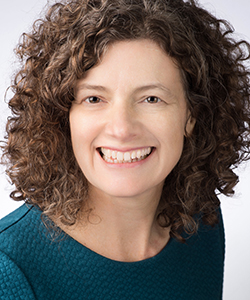From The Editor
It's Your Choice- Are You Making The Best One You Can?
By Tracy Crow
February 2012
Vol. 33 No. 1
“I wish I could (exercise more / read more / devote more time to learning), but I just don’t have time for that.”
How many times do we say something like that? And how many times do we hear it? No one has enough time to do everything he or she wants to do. Even when we know that there are certain actions we should make a regular part of our lives — for our long- or short-term health, for our careers, for the people we care most about — making a choice to change how we spend time isn’t easy. Many of us can’t see a pathway to make a different choice; some don’t recognize there is a choice at all.
The same holds true for how we spend money. “I can’t afford it” is a common refrain, both in times of economic strain and in rosier conditions.
When we do ultimately find a way to change how we spend our time or money, we’ve either had a dramatic shift in circumstances or we’ve followed the more difficult route. We’ve carefully examined exactly what our resources are, outlined our highest priorities, and determined how the resources can best be used to support our priorities.
According to the Resources standard, professional learning that achieves its intended outcomes requires educators to follow that more difficult route. The examination of how resources are spent isn’t just internal to a school or system; communities and policymakers are intensely interested in that discussion as well. Making the case to shift resources to prioritize professional learning isn’t easy when the stakeholders involved in such a shift don’t recognize the value of professional learning, or worse yet, have experienced examples of professional development that would make them believe it should never be a priority. It’s difficult to counter the idea that an educator’s time with students might be less important than something else, if that other use of time can’t be directly connected to a better learning experience for students.
Fortunately, there are many examples of schools and systems that have undertaken the difficult task of examining how resources are spent relative to priorities and found it worthwhile to devote both time and money to professional learning. In this issue of JSD, you’ll read about a few of those examples:
- A school in Texas, recognizing its dwindling funds for professional learning, envisions a technology solution that embeds external expertise into internal processes for educator support.
- A burgeoning teacher leader propels his mathematics professional learning community forward through his leadership and skilled facilitation.
- A district in Washington state examines each priority for the district and devotes time and money to building educator capacity to support those priorities.
- A network of schools creates or finds time in the workweek for collaborative learning.
In addition to the rest of the issue, look online at the archive of past publications to find more examples.
Leaders who make wise resource choices take the first step by allocating and prioritizing time, money, human, and technology resources for professional learning. However, until they examine the impact of those choices, they won’t know if their course of action achieved its intended outcomes. Without that information, their cycle of improvement is incomplete. They must continuously take the time to understand how their choices relate to their priorities.

Tracy Crow served as chief strategy officer for Learning Forward.
Recent Issues
BUILDING BRIDGES
December 2024
Students benefit when educators bridge the continuum of professional...
CURRICULUM-BASED PROFESSIONAL LEARNING
October 2024
High-quality curriculum requires skilled educators to put it into...
LEARNING TO PIVOT
August 2024
Sometimes new information and situations call for major change. This issue...
GLOBAL PERSPECTIVES
June 2024
What does professional learning look like around the world? This issue...









